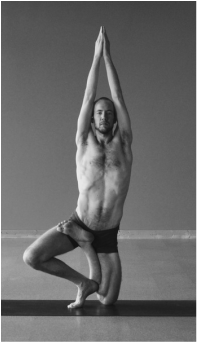|
Why do we practice yoga? Is it for strong abs? To be able to touch our toes? To stand on our hands? To get our heart rate up? To calm our minds? To lower stress? To know God?
Yogis practice for all of these reasons and many more. There are as many reasons as there are people on the planet. But what is the true purpose of yoga? It is a practice with many physical, mental, spiritual and emotional benefits. Which of these is yoga's true purpose and which are side-effects? Playing guitar will make your fingers tough and calloused, but few would claim that callouses are the purpose of guitar playing. Yoga is a complex endeavor. Traditionally it has between 6 and 10 diverse areas of focus, or limbs. These include Disciplines and Values, Physical Postures, Breath and Energy Control, Inward Focus of the Senses, Concentration and Meditation, Chanting and Ritual. Some yogis focus intently on one area, others dabble in all of them. I will explore each of these areas in some depth over the coming weeks, discussing how they aid and hinder us as we progress toward the true goal of yoga. It is simple in concept but unending in practice: to see things as they truly are. We see the world through a filter that is unique to each of us. Our perceptions are colored by our own experiences and the mental constructs that we have in place to explain the world and the people in it. This is why, if you ask 5 different people for their explanations of an event, you will get 5 different but equally plausible answers. We all see the world differently. The purpose of yoga is to purify our perception of the world. In the words of Pattabhi Jois it is the "purification of the sense organs." We change the way we see the world, how we interpret and interact with it. Step by step we notice and dissolve our individual prejudices and preconceptions, from the most obvious all the way down to the ones we don't yet know we have. As William Blake put it, "If the doors of perception were cleansed every thing would appear to man as it is, infinite. For man has closed himself up, till he sees all things through narrow chinks of his cavern." With this in mind, let's explore the various practices of yoga, starting with the most common: Physical Postures (Asana). The Purpose of Yoga, Part 2: Physical Postures/Asana The Purpose of Yoga, Part 3: Energy Control/Pranayama
0 Comments
Leave a Reply. |
This journal honors my ongoing experience with the practice, study and teaching of yoga.
My FavoritesPopular Posts1) Sridaiva Yoga: Good Intention But Imbalanced
2) Understanding Chair Posture 2) Why I Don't Use Sanskrit or Say Namaste 3) The Meaningless Drudgery of Physical Yoga 5) Beyond Bikram: Why This Is a Great Time For Ghosh Yoga Categories
All
Archives
November 2017
|


 RSS Feed
RSS Feed